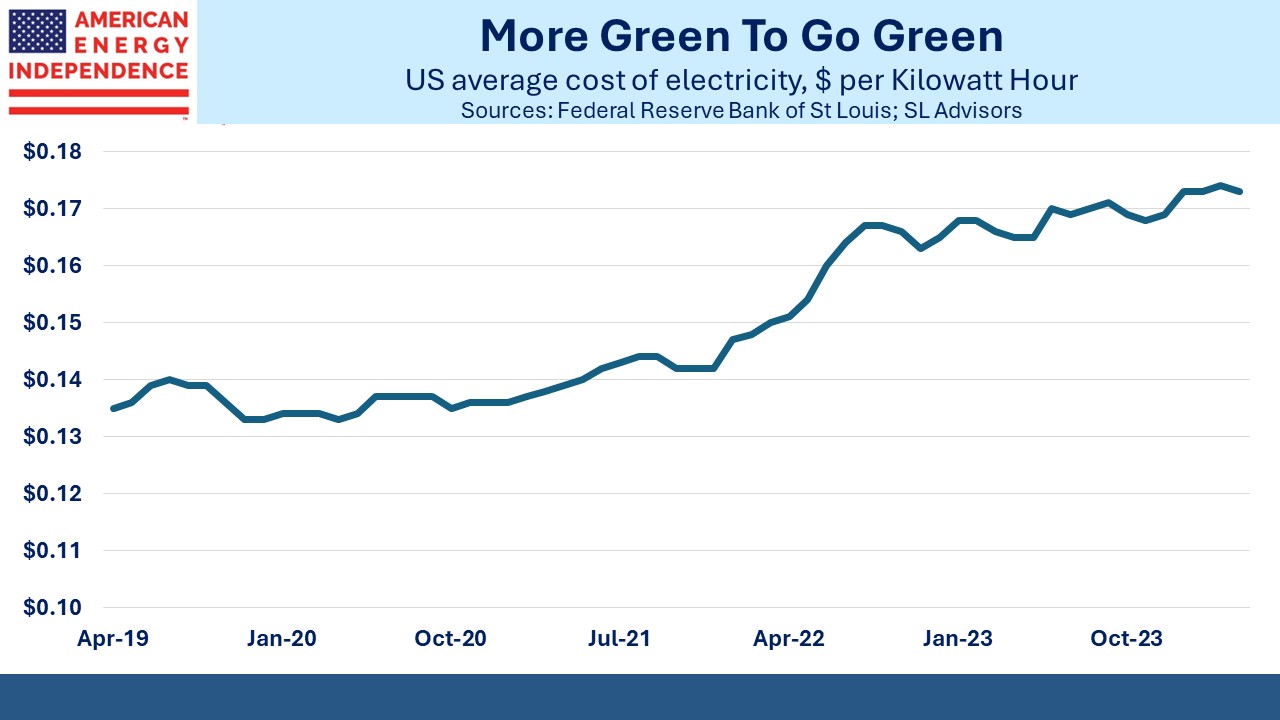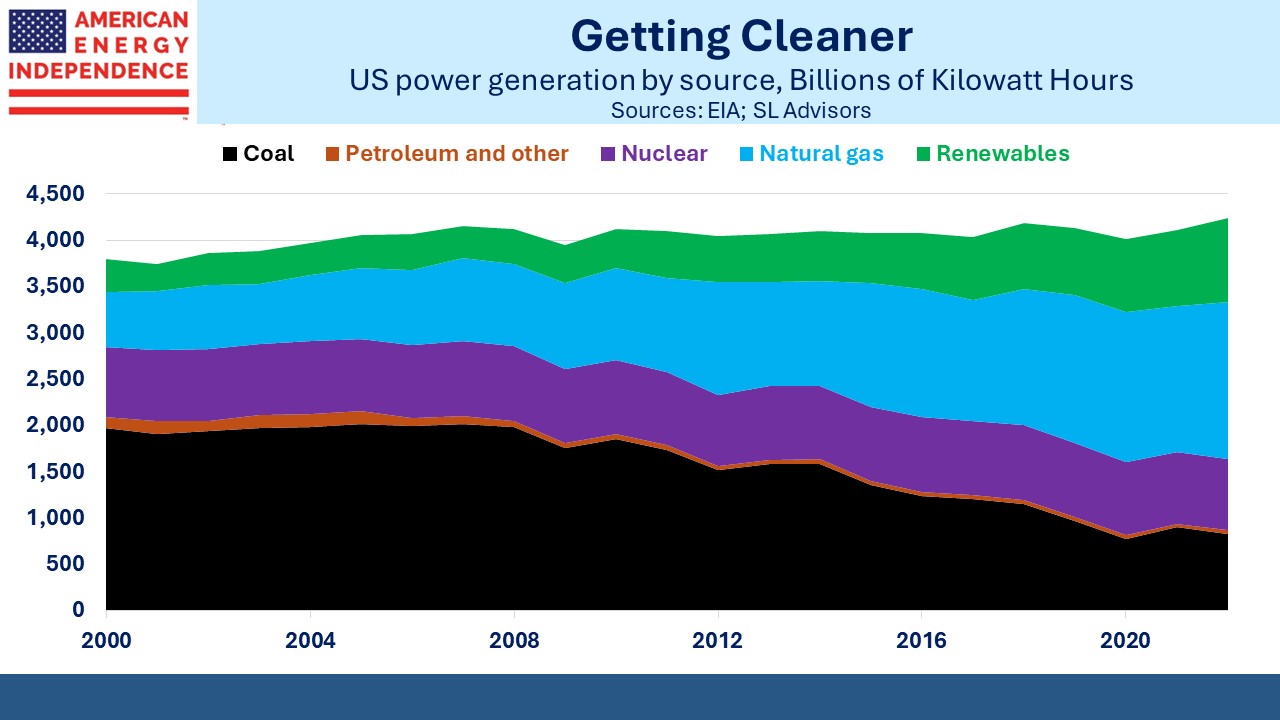Drilling Down On AI
It says something about one company’s dominance of AI chips when a presentation on power demand growth starts with Nvidia’s revenue forecast. But that’s how John Schultz of the Advanced Data Center Consulting Group opened a recent webinar. Unit volumes can be derived from sales, and the number of chips being bought determines the amount of new power demand.
Consequently, AI electricity use is forecast to more than double this year versus 2023.
Blackstone is investing $8BN with data center provider QTS preparing for the AI boom.
AI chips are power hogs, but less appreciated is the need for electricity to cool them as well. As more computing is packed into smaller spaces, the physical limits of blowing cold air on the equipment are being reached. Combining water with data centers was long rejected by the industry as too risky, but direct to chip liquid cooling is becoming the only practical way to stop the expensive kit from from melting.
Microscopic fragments in the cooling fluid can damage the chips, so stainless steel pipes are required to move PG25 (85% water/15% anti-freeze). Mesh filters with openings measured at 100 microns – ten times the size of a human blood cell — are used to trap particulates.
Schultz reviewed some of the AI uses already deployed.
Microsoft Office uses Copilot (dubbed “AI for the workplace”) to create powerpoint presentations, write in Word based on an outline and build Excel macros. Google’s Duet aims to compete.
There are important applications in drug research, where development times are coming down sharply. Terray Therapeutics captures 50 terabytes of raw data (more than 12,000 movies) on billions of molecular interactions every day in their quest for new treatments. McKinsey thinks pharmaceuticals have a “once in a century” opportunity.
Interpretation of medical images is 2.5X more effective since AI can learn from 10,000 examples in less than three months whereas a radiologist would need twelve years to see the same number of images.
Finance is using AI-powered chatbots for customer service, to detect fraud and to evaluate investments.
Data center location depends on proximity to its customers. AI training can be done anywhere as long as the data consists of words and text that can be moved easily. Video data requires far more bandwidth, so this type of AI training happens where the video is stored.
Latency is another issue. Microsoft’s Copilot can tolerate latency of 100-250 milliseconds, which means they need fewer data centers (Schultz believes four) across the US to serve most of their customers. Applications requiring less latency need more data centers across the country to reduce the physical distances data must cover to the customer.
Powering the AI revolution will be challenging. Some data centers will rely on dedicated electricity generation, with natural gas an obvious choice. Given the sensitivity of many IT companies to their green credentials, expect much buying of carbon credits and other efforts to offset CO2 emissions.
Solar and wind will require excess generation capacity to compensate for their intermittency. And nobody likes power lines passing over their land.
Microsoft is considering using small modular reactors, but given popular opposition to nuclear power, they’ll need to be in rural areas.
The scale of the jump in power demand is already a political issue. The Electric Reliability Council of Texas (ERCOT) now expects electricity demand to increase to 150GW by 2030, up from 85GW today. Last year their 2030 forecast was for 130GW.
This will challenge the current approach whereby customers sign up for power supply whenever they’re ready. ERCOT CEO Pablo Vegas said more than half the new demand will come from crypto-miners and data centers. Bitcoin production is a misallocation of resources and should be near the bottom of any priority list.
Data centers create few local jobs once they’re built, so there’s the potential for a political backlash if retail electricity prices are perceived to be rising because of AI. Some new customers, such as hospitals, schools and residential areas may receive priority in connecting to the grid.
It is somewhat reminiscent of the dot.com excitement 25 years ago. The internet brought hype but was hugely consequential. Overbuilt fiber-optic networks led to sharply lower communications costs which stimulated demand.
AI hasn’t yet had a discernible impact on how we do our jobs at SL Advisors. I still type every word of every blog, and the videos are me. But the use case examples provide compelling evidence that another computing revolution is underway. Increased power demand will boost natural gas consumption, benefiting companies such as Energy Transfer, Kinder Morgan and Cheniere.
Try googling will AI boost natural gas demand?
Pipeline multiples are still too low, with 6% dividend yields plus 4% growth providing a potential 10% total return.
We have three have funds that seek to profit from this environment:

















